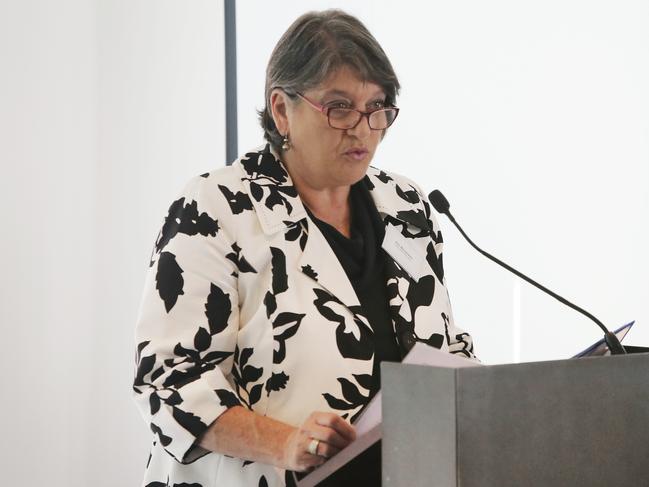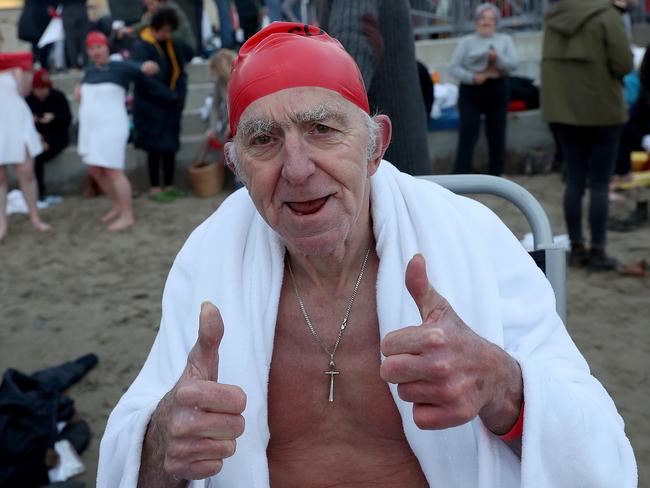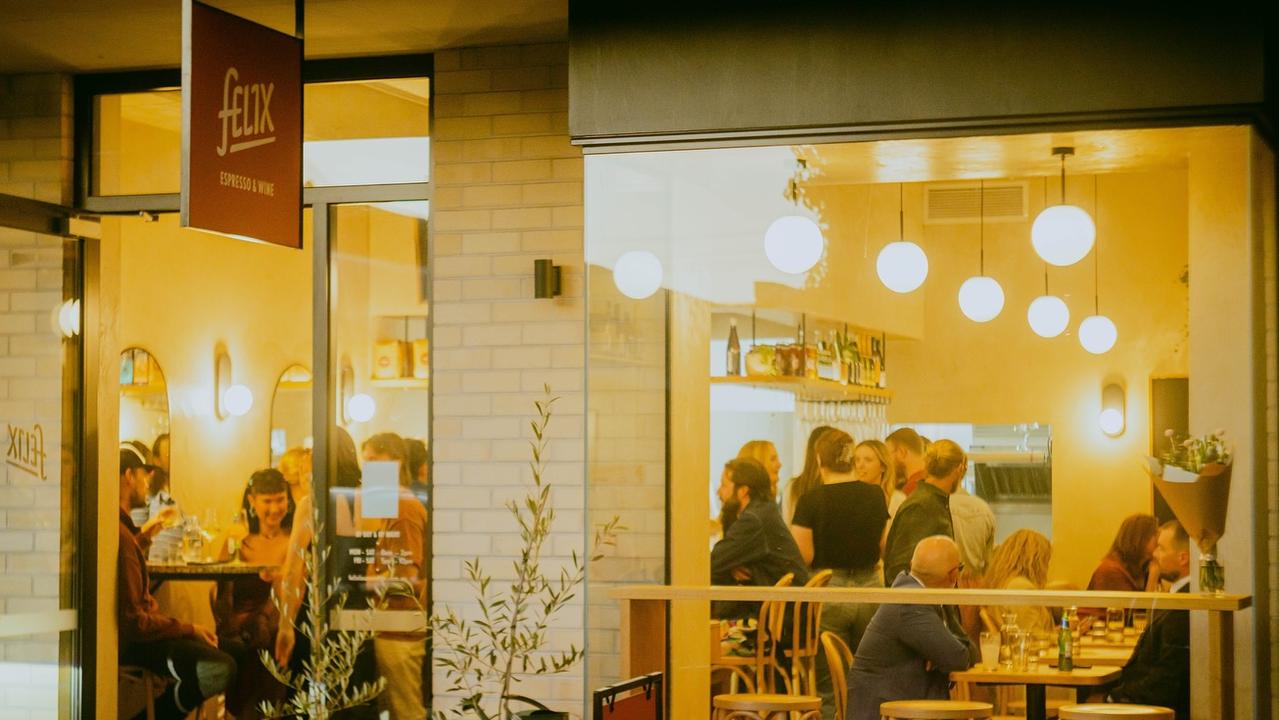TasWeekend: Bringing help close to home
MORE Australians are opting for the Federal Government’s new care packages over institutional care, and while the model seems to be working well — especially for individuals — thousands remain on a waiting list.

Lifestyle
Don't miss out on the headlines from Lifestyle. Followed categories will be added to My News.
THERE are worry lines on Dirk Simons’ kindly face. His 85-year-old wife Aartje, who has Alzheimer’s disease, has just returned home after a few hours at a nearby respite centre and has joined us at their dining table. The Simons have lived in their two-storey brick home at Blackmans Bay, south of Hobart, for 28 years and they don’t want to leave.
Aartje’s health has deteriorated over the past few years and Dirk, 77, has had to adapt to his new role as carer, but he doesn’t want to put his wife in a residential aged care home. “I want to keep her home as long as I can,” he says of the woman he’s lived with for 57 years. “I remind myself that it’s the disease that’s causing her to behave like she does, it’s not her.”
The couple, Dutch migrants who met in Devonport, have endured much together, including the deaths of two of their four children at birth.
Dirk’s reluctance to lose his wife’s company is neither surprising or uncommon. Increasingly, Australians are choosing the Federal Government’s home care packages over institutional care in the face of vexed debate about the quality of life in aged care facilities, assertions of corruption and horrific stories of abuse, malnutrition and neglect in residential aged care homes.
Home care – available to any older Australian who is assessed as being eligible, or a younger person with a disability, dementia or other special care needs – was a centrepiece of the Government’s May budget, with its promise of an extra 14,000 home care packages worth $1.6 billion over four years.
However, this falls dramatically short of demand, with 104,600 people on a national waiting list, a figure that includes 2500 Tasmanians.
Since February last year, changes to the way home care is provided have had a transformative effect on aged care in Australia. For the first time, individuals are able to choose their service provider/s (in the past, providers were allocated and they distributed packages) and how they’ll spend their money.
This makes respite, as well as weekly outings to the football, coffee or breakfast in cafes with friends or carers, and participation in events like the Dark Mofo Nude Solstice Swim a real and wonderful possibility for those who want them.
But the rollout has been painfully slow for many. Tasmanian commentators are concerned about the huge waiting list, how many people are on lower-level packages than they require (while waiting for a top-level package), and why Tasmania with its ageing population is receiving fewer numbers of top-level packages than states such as Queensland.
They say the new system can be hard for elderly people to navigate, and they’re concerned about an influx of mainland and for-profit service providers into the state in recent months, and the fees they’re charging to manage packages.

Dirk is grateful for the top-level package his wife has been given, after making do with a level-two package while they waited for it, but he’s also agitated. He’s just received the monthly statement from Aartje’s service provider and he’s shocked by the administration fees they’re being charged.
“Look at the figures,” he says, showing me the paperwork. “It’s mind-boggling. There’s quite a few hundreds of dollars in [monthly] fees. I’m sure these businesses are making heaps of money.” There’s $49,500 available annually in Aartje’s package, plus the $5000 Dirk is required to contribute, and he wants to spend this on essential services, such as help with showering his wife and respite care.
“Aartje gets showered twice a week and I have a carer who comes to look after her while I play bridge on Friday afternoon,” Dirk says. “That’s really important to me. I’ve been going to bridge for years and I think I’d go nuts if I couldn’t do it. You have to be careful how you spend your money. I don’t want to spend money on things I can do, like cooking and cleaning.” Other key expenses for the Simons include the cost of respite care at nearby Manor Gardens, where Aartje goes three short days a week, and medication.
The Hobart-based executive director of Aged & Community Services Australia (Vic/Tas) Darren Mathewson says the Government is working on the issue of administration fees. “It wants to get some consistency in terms of how service providers advertise their fees and some comparability,” he says.
“Essentially there’s an administration cost, but generally we find it’s anywhere from 17 to 30 per cent [of the package]. My view is that by now, providers should have an understanding of what the real administration costs are and should have adjusted their fees accordingly.”
Home care isn’t new. In Tasmania, organisations such as The District Nurses have been caring for people in their own homes since 1896, but even they are excited by the changes afoot in aged care.
“It’s an excellent model,” says The District Nurses Tasmania chief executive Kim Macgowan. “It’s client-directed care. They get to choose who their in-home care is provided by. They may start by qualifying for a little bit of gardening but as their needs increase more services can be put in place. We now see people with dementia, for example, who are able to remain at home as a result of having a level-four home care package.”
Registered nurse Kelly Frerk, who works at The District Nurses and is the only community nurse navigator in Tasmania (helping people to obtain the home care services they want), agrees: “It’s a fairer system because it’s means-tested. We’ve helped clients get equipment they need to remain living safely in their own homes and reintroduced them to hobbies such as building model planes, which they had long ago given up. Home care packages are so important in giving independence and fulfilment to our clients.”
She says the changes are reducing the burden on adult children, who often struggle to help care for their elderly parents while working and bringing up their own families.
“Families can trust a carer or a District Nurse to look after their parents. They can spend quality time with their mum or dad without having to worry about them not having the services they need,” Frerk says. “That’s why it’s so exciting. The change is happening now, and we can see people are accessing more.”
The packages sit alongside the Commonwealth Home Support Program, which provides a basic, low-level of home care that isn’t income tested. To obtain a home care package, people can phone or apply via the My Aged Care website. Individuals are triaged, and an assessor will visit them at home to determine their level of need before a package is allocated. There are four packages: level one, basic care ($8000); level two, low-care needs ($14,500); level three, intermediate care ($32,500); and level four, high-level care ($49,500).

ACSA’s Mathewson says the new system highlights how big demand for home care is. “For the first time ever, we are able to measure what the unmet demand is,” he says. “This provides a level of transparency in the system that we haven’t had before. In the past, providers had their own waiting lists and there was no centralised collection of data.”
Graham Mineall, of Launceston, is one of the 2000 Tasmanians who are receiving home care packages. The 74-year-old had a level-three home-care package when the changes came into effect last year. His health has been deteriorating since the early 2000s, when he was diagnosed with Multiple sclerosis.
He says he was able to change providers as a result of last year’s reforms, and fulfil a dream with the help of his carers — to participate in the Dark Mofo Nude Solstice Swim. “It was something I’d wanted to do since the first one in 2013, when I’d thought that’s what I would have done if I could,” Mineall says.
“Then I realised, wow, I might be able to make this happen. Surf Life Saving Tasmania let me use their special beach wheelchair, and my carers pushed me along the sand. It was a fun, exciting day full of atmosphere. It was just fantastic.” Mineall lives on his own, and intends to stay at home for as long as possible.
“I would rather slash my wrists than go into residential care at this time,” he says. “I’m still independent. I have an electric wheelchair and I live close to medical facilities, hotels and restaurants. I need help to clean the house and prepare food.”
He uses the money from his package, which is managed by Masonic Care Tasmania, to pay for the help he needs around the house, and to go on social outings. He says he looks forward to the company and conversation his carers provide.
“I rely on my carers. We go out fortnightly to do the shopping and every second week we go for a social outing,” Mineall says. “The fact is, my children who live in Tasmania [three of four] are all working mothers. They are joint wage earners for their families. That’s the unfortunate thing. They have to work like everyone else to look after their families. I rely more, because of these reasons, on my carers than my children, who come to visit rather than help. But they are only a phone call away in an emergency.”
Dee Lakey, of Dodges Ferry, cares for husband David, who has severe neuropathy and “basically can’t walk”. They have a level-four package managed by South Eastern Community Care, allowing them to pay for a masseur and occupational therapist and respite care for David so Dee can have some down time.
“David has been into a residential care home for some respite, which gives me respite, but it’s not his thing. There’s nothing wrong with his mind and he’s very unhappy there,” Dee says.
“We have a personal carer who comes in each day to shower and dress him. By having the masseur come and work on his legs and feet once a week, and an occupational therapist who gives David exercises to do, he’s got to the point where he’s able to walk a little bit on the walker. That’s been a huge benefit to us.”
Penny Silver, of Risdon Vale, was recently widowed and has a level-two package while she awaits surgery for knee and hip replacements. She says the package, which is managed by Glenview Community Services, gives her “freedom to choose” what she wants to do and when she wants to do it.
“It’s very important to me that I can be as independent for as long as possible,” she says. “This is allowing me to live the kind of life I want to live. I’ve used it to have a personal trainer twice a week, to get myself physically fit for the surgery. My carers are a godsend. They take me to doctors’ appointments and we even go out for coffees.”

ACSA’s Mathewson says it’s exciting to see older Tasmanians taking charge of their own lives.
“People are using funds for social experiences,” he says. “Providers have to ensure the funds are spent appropriately, and you can’t say I want to go on a holiday to the Caribbean. But I know of one provider that takes a client to the footy each week as he’s always done all his life.
“And there was one older man who said he wanted to go on a date, and his service provider was able to facilitate that.”
The message is clear: Many people want to be cared for — and to care for their loved ones — at home. The trouble is, the waiting list for high-level packages in particular is long, and there’s no easy fix.
“There’s significant demand for packages, as evidenced by the 104,602 consumers in the queue,” says Mathewson. “The number of people [82,237] who require a level-three or four package raises significant concerns that consumers who wish to stay at home will be at risk, and highly likely to end up in residential care or hospital, at higher costs [to the Government].
“Tasmania has the oldest and fastest ageing group, and we would have hoped the flowthrough of higher-level packages coming on line would have been higher. Currently states such as Queensland are getting a higher number of these in comparison to their share of the population over 70. Consistency of assessment should be monitored to ensure appropriate and equitable allocation of the rationed packages.”
Council on the Ageing Tasmania’s operations manager Debra Lewis agrees. “The aged care reforms are heading in the right direction by giving people more control. They allow them to stay in their homes longer and this keeps them connected with their families and communities. But we need more packages. People are winding up on a waiting list and getting lower-level packages [than they need].”
The changes have resulted in increased competition among service providers, and an influx of interstate providers. In Tasmania, key providers include Uniting AgeWell, Anglicare, Onecare, South Eastern Community Care, Community Based Support, Glenview Community Services, Masonic Care Tasmania and Family Based Care North West. Feros Care and Integrated Living are based on the mainland.
In December there were 53 approved home care providers operating in Tasmania — up from 44 in March.
“Providers are struggling to keep pace with the changes,” says Lewis. “People need to be on the ball when choosing a service provider. They need to be informed and to ask the right questions. For instance, does the provider charge exit fees?
“It’s very difficult to compare providers due to the absence of comparable information on My Aged Care about fees and charges. More needs to be done to make it easier to compare providers before a choice is made to enter a contract for home care.”

Mathewson agrees there has been a lot of movement in the provision space.
“When the system first changed there wasn’t a big influx of providers, but we have seen a shift recently,” he says. “I’m getting feedback that there’s been an influx of interstate service providers. They have well-developed systems and generally employ local home care workers or broker with other organisations. There’s always a bit of tension when interstaters come into Tasmania, but it will settle over time. Ultimately it provides consumers with more choice.”
He says he’s seen no evidence of wrongdoing by for-profit providers working in the sector, and believes the changes will result in great transparency for consumers.
“They have to transparently show costs to consumers. They are learning as they go. In the past, if someone was unhappy and wanted to change provider, the provider kept the package and the client went back on the waiting list. Now, with more providers, it’s becoming more transparent and consumers have more power. People have the right to go to another provider if they’re not happy. This will drive healthy competition.”
For Mineall and Dirk Simons, this transparency is instructive but also troubling. Mineall says he’s resigned to the administration fees, but hopes the Government will ensure the sector is properly regulated.
“I work on the premise that it is what it is,” he says. “There’s not a lot I can do about it.
“My previous provider was based on the mainland and I’ve found having a local care provider is a lot cheaper. Apparently when I go up to a level-four package my fees increase substantially and I can’t understand why that is. We are depending on the Government to do the right thing by us and ask questions of the service providers.”
In the Simons’ home, Aartje sits quietly but contentedly at the table as Dirk describes how overwhelmed he is by their monthly statement with its itemised fees and costs.
“It’s apparently a not-for-profit organisation,” he says. “COTA [the Council on the Ageing Tasmania] has been a huge help to me in all of this. I’m really grateful to them.”
Aartje gently steers the conversation towards happier times. She gets up from the table to show us photos of her adult sons, and the couple’s parents. It prompts Dirk to reminisce about their life together: “I was only 20 when I met Aartje,” he says. “We’ve made our home here and it’s a terrific community.”


